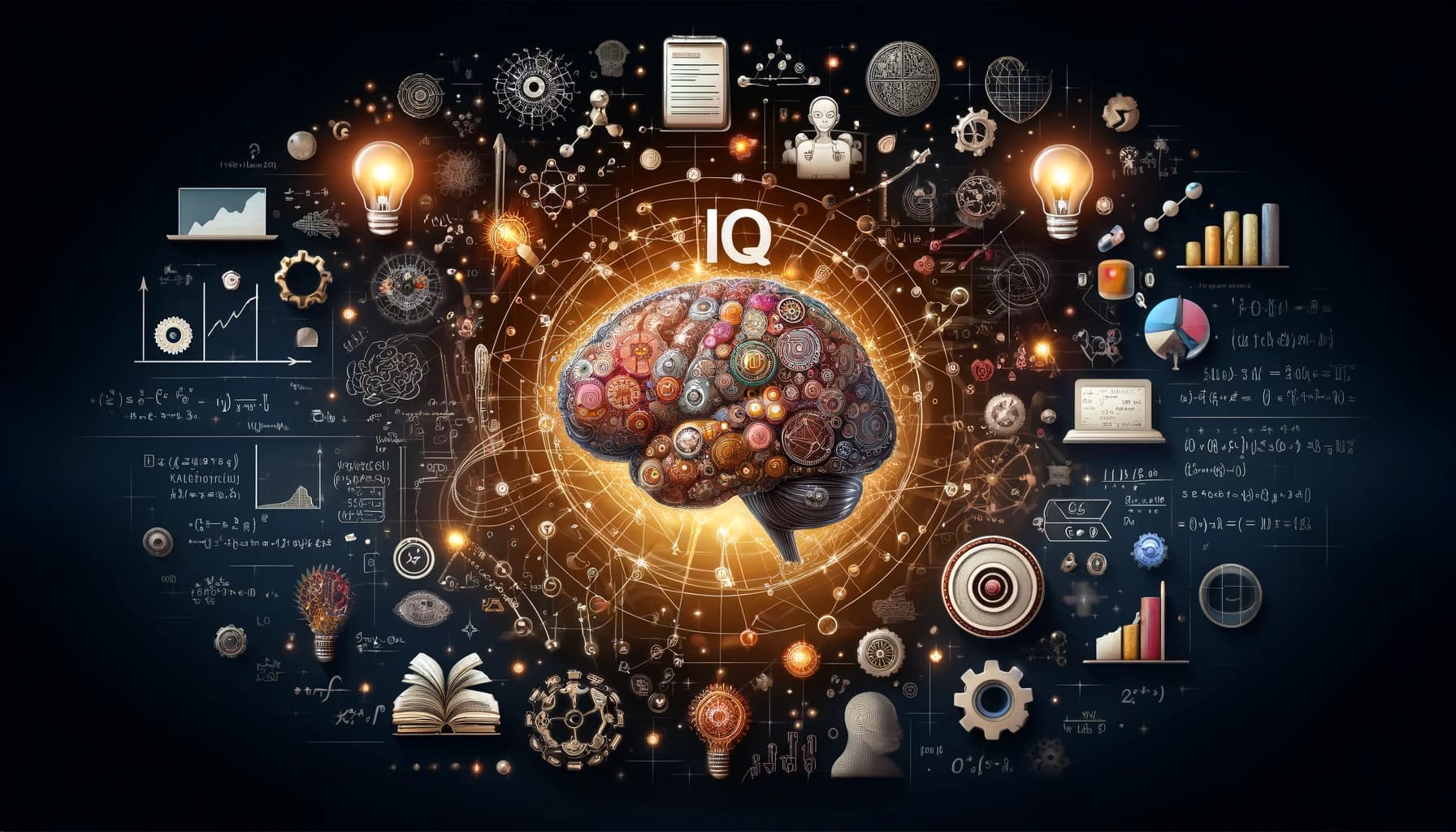Understanding intelligence and its various facets has long fascinated scientists, educators, and individuals alike. One of the primary tools used to measure cognitive abilities is the IQ test. This pillar article explores different types of IQ tests, including the renowned Wechsler Adult Intelligence Scale (WAIS), the Stanford-Binet Intelligence Scale, the popular MV2G test, and various pattern recognition tests.
The Wechsler Adult Intelligence Scale (WAIS)
The Wechsler Adult Intelligence Scale (WAIS) is one of the most widely used IQ tests for adults. Developed by psychologist David Wechsler, the WAIS provides a comprehensive assessment of cognitive abilities through four key components:
- Verbal Comprehension Index (VCI): This section evaluates understanding of written and spoken language, measuring vocabulary, comprehension, and verbal reasoning.
- Perceptual Reasoning Index (PRI): This section assesses the ability to interpret and solve visual puzzles, focusing on abstract thinking and spatial processing.
- Working Memory Index (WMI): This part measures the capacity to memorize and manipulate new information, evaluating short-term memory and concentration.
- Processing Speed Index (PSI): This section examines how quickly the brain processes and responds to visual and auditory information.
The WAIS is renowned for its detailed and multidimensional view of an individual's cognitive abilities, offering valuable insights for personal development, career planning, and educational pursuits.
The Stanford-Binet Intelligence Scale
The Stanford-Binet Intelligence Scale has a rich history dating back to the early 20th century when Alfred Binet developed the original test to identify students needing educational assistance. Adapted for the United States by Lewis Terman, the Stanford-Binet has evolved into its latest version, the Stanford-Binet 5. This test measures five key components:
- Fluid Reasoning: The ability to solve new problems and think abstractly.
- Knowledge: General understanding and accumulated information.
- Quantitative Reasoning: Numerical and mathematical problem-solving skills.
- Visual-Spatial Processing: Understanding spatial relationships and visualizing objects.
- Working Memory: Holding and manipulating information in short-term memory.
The Stanford-Binet is versatile, assessing individuals from early childhood through adulthood, and provides a broad and detailed evaluation of cognitive strengths and weaknesses.
The MV2G Test
The MV2G test is one of the most popular online IQ tests, taken by over 6 million people. The first version of the test was developed as an online test for Mensa International for their 40th anniversary in 2006. It was evaluated by the SRH University Heidelberg. This test primarily focuses on pattern recognition but also includes sections for mathematical, numerical, and verbal-logical reasoning.
Components of the MV2G Test
- Pattern Recognition: Evaluates the ability to identify and analyze patterns and sequences.
- Mathematical Reasoning: Assesses numerical problem-solving skills and mathematical understanding.
- Verbal-Logical Reasoning: Measures the capacity to understand and reason with verbal information and logical concepts.
The MV2G test's popularity stems from its accessibility and the depth of cognitive insight it provides, making it a favorite among individuals seeking to understand their intelligence better.
Pattern Recognition IQ Tests
Pattern recognition is a fundamental cognitive skill, essential for problem-solving and abstract thinking. Several IQ tests focus on this ability, including:
Raven's Progressive Matrices
Raven's Progressive Matrices is a non-verbal test that measures abstract reasoning. It consists of visual patterns with a missing piece, which the test-taker must identify from a set of options. This test is widely used across different cultures due to its minimal language bias.
Cattell Culture Fair Intelligence Test (CFIT)
The CFIT is designed to minimize cultural and language biases, focusing on fluid intelligence through pattern recognition tasks. It includes series completion, classification, and matrices subtests, assessing the ability to recognize and analyze patterns without relying on language.
Wechsler Intelligence Scale for Children (WISC) - Block Design Subtest
The WISC's Block Design subtest measures visual-spatial and pattern recognition skills in children. Test-takers use colored blocks to recreate patterns shown in pictures, assessing their understanding of spatial relationships and visual patterns.
Stanford-Binet Intelligence Scales - Pattern Analysis
The Stanford-Binet includes a Pattern Analysis subtest that measures visual-spatial processing and abstract reasoning, challenging test-takers to identify and analyze visual patterns.
The Role of Pattern Recognition in Cognitive Development
Pattern recognition is not only a measure of intelligence but also a crucial component of cognitive development. It helps individuals:
- Solve Problems: By identifying patterns, individuals can develop strategies to solve complex problems more efficiently.
- Make Predictions: Recognizing patterns allows for the anticipation of future events based on past occurrences.
- Enhance Learning: Pattern recognition facilitates learning by helping individuals understand and organize information.
Conclusion
IQ tests offer a fascinating glimpse into the complex workings of the human mind. From the comprehensive assessments of the WAIS and Stanford-Binet to the focused evaluation of pattern recognition in tests like Raven's Progressive Matrices and the MV2G test, these tools provide valuable insights into cognitive strengths and areas for development. Whether you're exploring your potential for personal growth, educational advancement, or career planning, understanding the different types of IQ tests can help you unlock the secrets of your mind and harness your cognitive abilities to their fullest.
Unlock the power of your mind with these diverse IQ tests and discover the pathways to a more insightful and empowered life.
